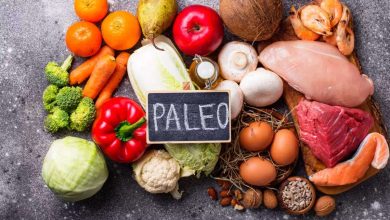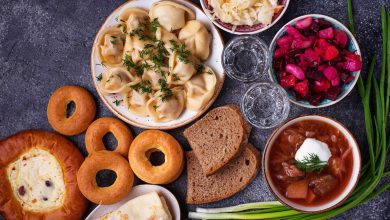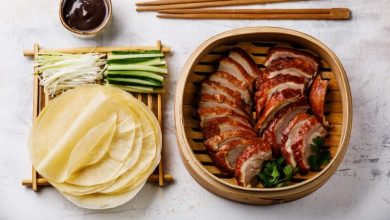Bangladeshi Best Foods
Spices are extremely important in Bengali cuisine. In most cases, it is they, and not the main ingredients, that give the dish the desired taste, color and aroma. And it is they who are usually the very component, without which no chef will simply begin to make this or that dish. In Bangladesh, there is no concept of “just meat” or “boiled rice” – each dish must be accompanied by a certain set of spices.
Shirish (mustard) and mustard oil, ado (ginger), darucini (cinnamon) and golem moshav (cinnamon and cardamom seasoning), dhania (coriander seeds) and dhania pitta “(coriander greens),” leach “(cardamom),” gol-maurice “(black peppercorns) and” kacha-moris “(hot peppers),” mauri “(fennel),” zika “(cumin) and” kalo-zira “(kalindzhi, or black cumin),” meshi “(Shambhala, or Greek fenugreek) – this is just a tiny part of the huge number of local herbs and spices.
Vegetables, unsurprisingly, are also used to prepare a wide variety of dishes. The second most important after rice is usually considered “dal” – lentils of all varieties, which is often used as a side dish for fish and meat. The usual addition to dal is bhava (pancakes, although by and large this is an extensive class of dishes made from finely chopped vegetables that are simply cooked for a long time).
Chana (Bengal peas), tur (red peas), urid “(black peas) and” mung “(green peas), as well as flour from legumes -” began “. By and large, literally everything is used here – “runner” (eggplant), “Kumar” (pumpkin), “aloo” (potatoes), “am” (mango), “pepe” (papaya), “bison” (pea flour), “corolla” (large cucumber-like bitter melon), and even “postop” (poppy paste, often mixed with coconut to form balls of “boron”, which are then fried in oil).
The most typical vegetable dishes usually include “charchari” (a vegetable dish that is prepared practically without processing, like a salad, but actively flavored with all kinds of spices and gravies), “zha-alu” (spicy potatoes) and “alu-piazer-chorchori” ( potatoes with onions), “chkhanchra” (a complex dish of various vegetables, fish, offal and oil), “alu-kopir-dalna” (curry made from white cabbage), “chichi” (tiny pieces of vegetables, sometimes even their peels, usually seasoned with punch-phorone sauce or mustard).
dana (a mixture of vegetables and eggs with spices, ghee and complex seasonings like garom-mashla), the most popular “dam” or “doom” (vegetables, meat or rice, slowly baked in a pot at a high temperature), vegetable balls “ghanta” (except for all kinds of vegetables, they often add minced meat or fish), a whole class of “jolt” dishes (vegetables, meat or fish are stewed with spices) and ” Kaliyah “(the same large group of dishes stewed in a large amount of butter) and loved by many” time “(boo kalong – “charred”, that is, vegetables fried in banana leaves directly on an open fire, as well as fish or meat).
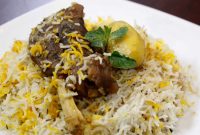
Chutney, a traditional Indian seasoning made from fruits or vegetables with the addition of vinegar and spices, is usually an important element of the meal. However, in Bangladesh, this is not just a seasoning, but rather all the dishes that are prepared and served on the table with her participation. Bangladeshi chutney is usually made with mango, tomato, pineapple, Indian date, papaya and spices and is tangy and sweet. It is most often served with dal, paper waffles (also made from lentils and potatoes) and shaku (tapioca).
Another integral part of Bangladeshi cuisine is beef, the presence of which distinguishes this country from neighboring India (the use of beef is also prohibited for the Hindu minority of the local society). This type of meat is readily used in all regions of the country, considering it the main, and rather expensive, product. A cheaper “substitute” is goat meat, poultry and even just boiled eggs, but not a single festive table is complete without beef.
Also popular are “khash”, or “khash” (meat of sterilized goats), all kinds of kebabs, “chap” (lamb or veal ribs cooked over low heat in the oven), the indispensable “chicken curry” of chicken with tomatoes, “cut” ( meat in yoghurt with cardamom sauce), kina-motor-aloo (minced meat baked with spices) and kina-curry (minced curry), bhuna meat stewed in its own juice (mustard oil used for these purposes, respectively called “bhuna”).
“Kati-roti” (lamb kebab in a flat cake), “murgi-rost” (simple fried chicken with spices), similar to “petties” meat pie, traditional for the whole region “kofta” cutlets (here to it is customary to serve egg and savory sauce), as well as a very common class of dishes “korma” (literally “stewed with onions” – meat in onions with sour milk sauce and ghee).
The most important supplier of proteins to the local table is fish, which Bangladeshis consume in incredible quantities due to its cheapness. There is even a saying Mach e Bhat e Bengali (“fish and rice make a Bengali”), which quite objectively reflects the role of
An indispensable part of the meal is bread – both the quite familiar loaves of wheat “pau-roti”, and specific local types like “rays” (small round unleavened cakes, heavily fried in oil), potato cakes “pure”, pea cakes with filling ” kochari “, golden” port “made from wheat flour and” roti “fried over an open fire.
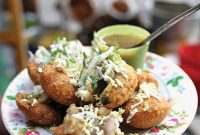
Dairy products are relatively poorly distributed, but cottage cheese, ghee, “doe” (yogurt, although its parameters are closer to our fermented baked milk) are used almost everywhere and with great ingenuity.
It is not only a common table decoration and children’s fun, but also an important element of many cult events. Most of the sweets in Bengali cuisine are made from sweetened pressed cottage cheese (“chhana”, more like cheese) and sugar, but there are many borrowings from Arabic, Chinese, Indian and British cookery, and many of them have not looked like the “ancestors” for a long time. Very popular are “misti-dhohi” (sweetened creamy yogurt), “zerde” (sweet rice with nuts).
“ros-malai” (round milk candies), “halva” (halva), “zerde” (sweet rice, fried in ghee), “mishit” (sweets), “whoa” (condensed milk), “shines” (sweet cottage cheese mixed with flour, there are literally hundreds of recipes) and its version “kora Pak” (with rice flour), the famous “roshgolla” ( “rasgullah”, balls of sweet cottage cheese with syrup, pistachios and spices, fried in boiling oil) and its more “dense” variety – “chowchow”, “ledikeni”, “kilo-jam”, “Sandesh”, “shumai” ( sweet vermicelli) and many dozens of other types. Noteworthy are the sweet “Khiri” or “firing” (rice pudding), as well as the most popular “pita” or “pate” (sweet cakes made from wheat or rice flour mixed with brown palm sugar, grated coconut and drizzled with syrup) more than a hundred varieties).
The usual everyday drink in the country is water. Also popular are “teas” (a sweet milk tea of an almost classic British look), “lassi” (a fermented milk drink similar to slightly diluted yogurt), fruit juices, coconut water and milk.
Alcoholic beverages are practically non-existent in Bangladeshi’s daily life, except for the cheap and very mediocre local rice beer. Islam strictly limits both the amount and the time of drinking alcohol, but in hotels for foreigners you can find bars with a very common selection of alcohol from all over the world.
